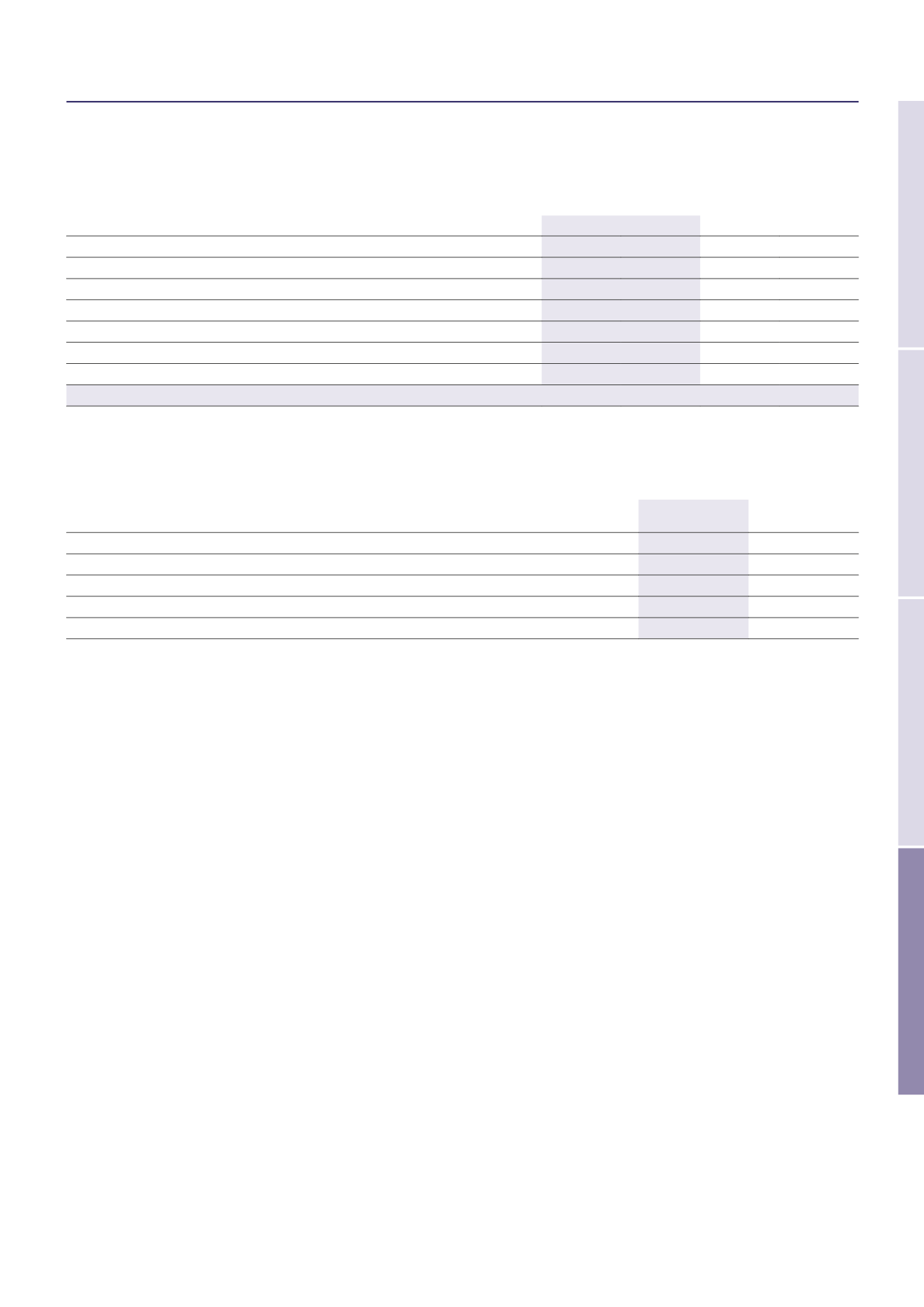

Rothschild & Co | Annual Report 2017
139
1. Overview
4. Financial statements
3.
Management report
2. Business review
The table below shows the Group’s equity price risk in relation to these instruments, by location.
In millions of euro
31/12/2017
% 31/03/2017
%
France
400.4
36%
227.7
24%
United Kingdom and Channel Islands
317.6
29%
315.3
33%
Rest of Europe
122.2
11%
134.7
14%
Switzerland
120.2
11%
114.5
12%
Americas
92.6
8%
92.6
10%
Australia and Asia
12.5
1%
35.9
4%
Other
41.4
4%
30.1
3%
TOTAL
1,106.9
100%
950.8
100%
2 Currency risk
The Group has exposure to the effects of fluctuations in foreign currency exchange rates on its financial position and cash flows. The table below
summarises exposure to foreign currency exchange rate risk. The net positions in the table are measured by reference to the net carrying amounts of
monetary assets and liabilities other than those in a subsidiary’s functional currency, and are shown after taking account of positions in derivatives.
In millions of euro
31/12/2017
Long/(short)
31/03/2017
Long/(short)
USD
34.3
40.9
EUR
21.8
12.4
GBP
2.3
3.9
CHF
(0.1)
3.8
Other
0.6
1.9
Excluded from the prior year data is a long euro exposure of €97 million, which is not representative of the currency risk during the year. This arose from
a large intercompany exposure on 31 March 2017, which was hedged shortly after the year end.
If the euro strengthened against these currencies by 5%, then the effect on the Group would be a loss to the income statement of €0.5 million.
3 Interest rate risk
Because of the nature of its business, only the banking entities in the Group are exposed to significant interest rate risk. These entities take a conservative
approach to the management of this risk on their assets, using derivatives to manage their exposure. Each December, the Group reports its combined
interest rate risk to its regulator in the form of a table which estimates the impact of a uniform 200 basis point rise over one year. The impact of such a
shock at 31 December 2017 would have been an increase of €15.3 million.
D. Liquidity risk
1 Liquidity
Liquidity risk arises from the mismatch between the legal maturity of assets and liabilities. Management of liquidity risk is covered in the report on internal
control and risk management procedures (page 66).
The Group’s three main banking groups each manage their own liquidity independently of each other. An illustration of how they manage their short-term
liquidity is summarised below, together with a measure of their liquidity coverage ratio (LCR). The LCR is a ratio of highly liquid assets to short-term
obligations. The figures below are taken from our regulatory returns but are not audited.
Rothschild Bank AG Zurich
RBZ’s liquidity policy includes a behavioural adjustment applied across different client types, which allows for approximately one third of client deposits
to be withdrawn over 30 days. Although the regulatory framework would permit significant mismatches within the 30-day time bucket, RBZ maintains a
more conservative approach to liquidity.
Internal limits provide for RBZ to be cumulatively cash positive in all periods (after behavioural adjustments). The behavioural adjustments are
complemented by an additional requirement that 20% of all client call deposits are held in cash and assets realisable within 48 hours.
RBZ’s LCR at 31 December 2017 was 153%, as measured for regulatory purposes (31 March 2017: 169%). The regulatory limit is 80%.
Rothschild Martin Maurel
RMM maintains a stable and diverse pool of customer deposits with a low customer loan-to-deposit ratio. Treasury manages liquidity to ensure that a
conservative position is maintained at all times by holding a significant amount of short-term liquidity with the Central Bank and other banks alongside a
portfolio of highly rated securities. Exposure to liquidity risk is considered to be very low and is monitored on a daily basis independently of the front office.
At 31 December 2017, RMM’s LCR was 205% (31 March 2017: 202% for RCB and 333% for BMM). The regulatory limit is 80%.









